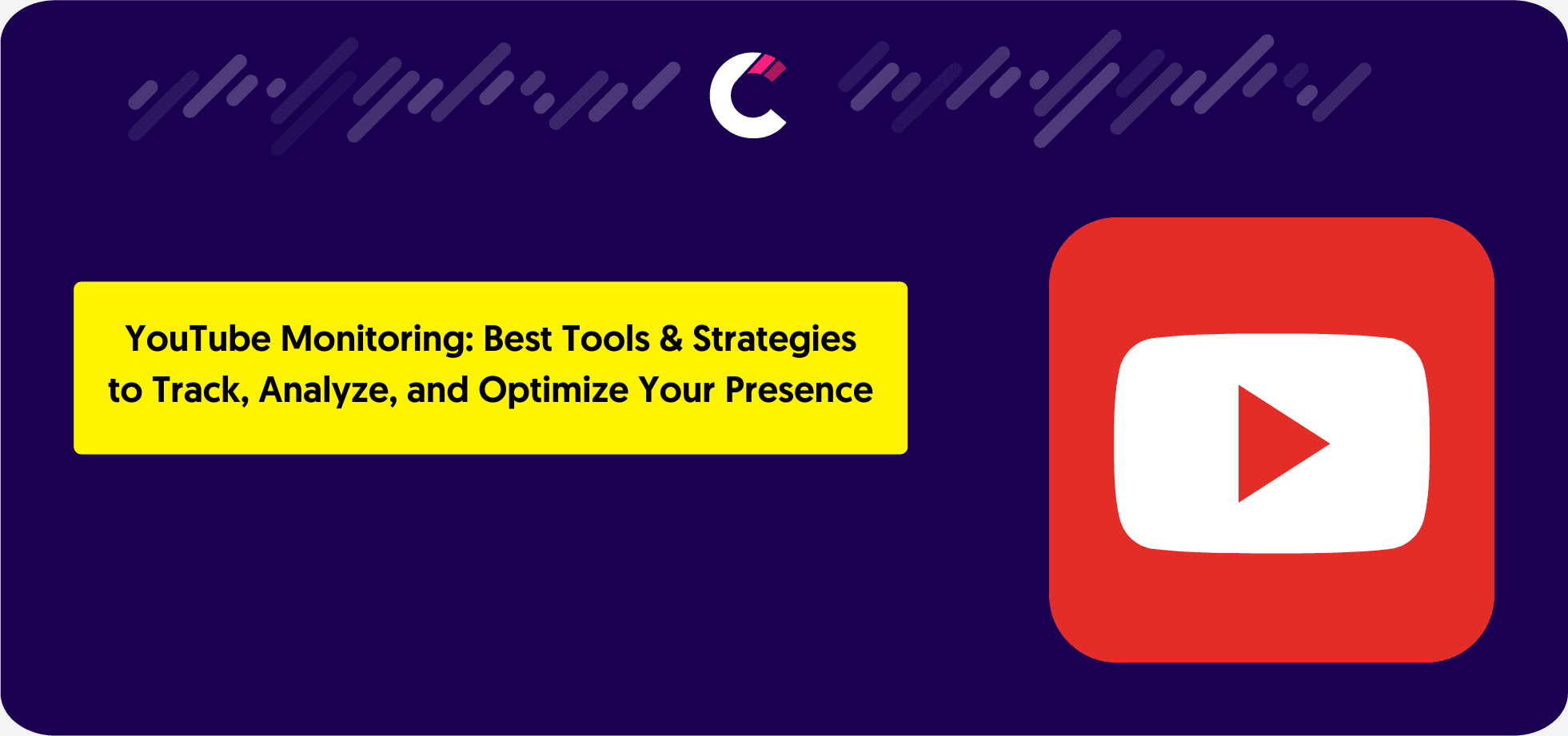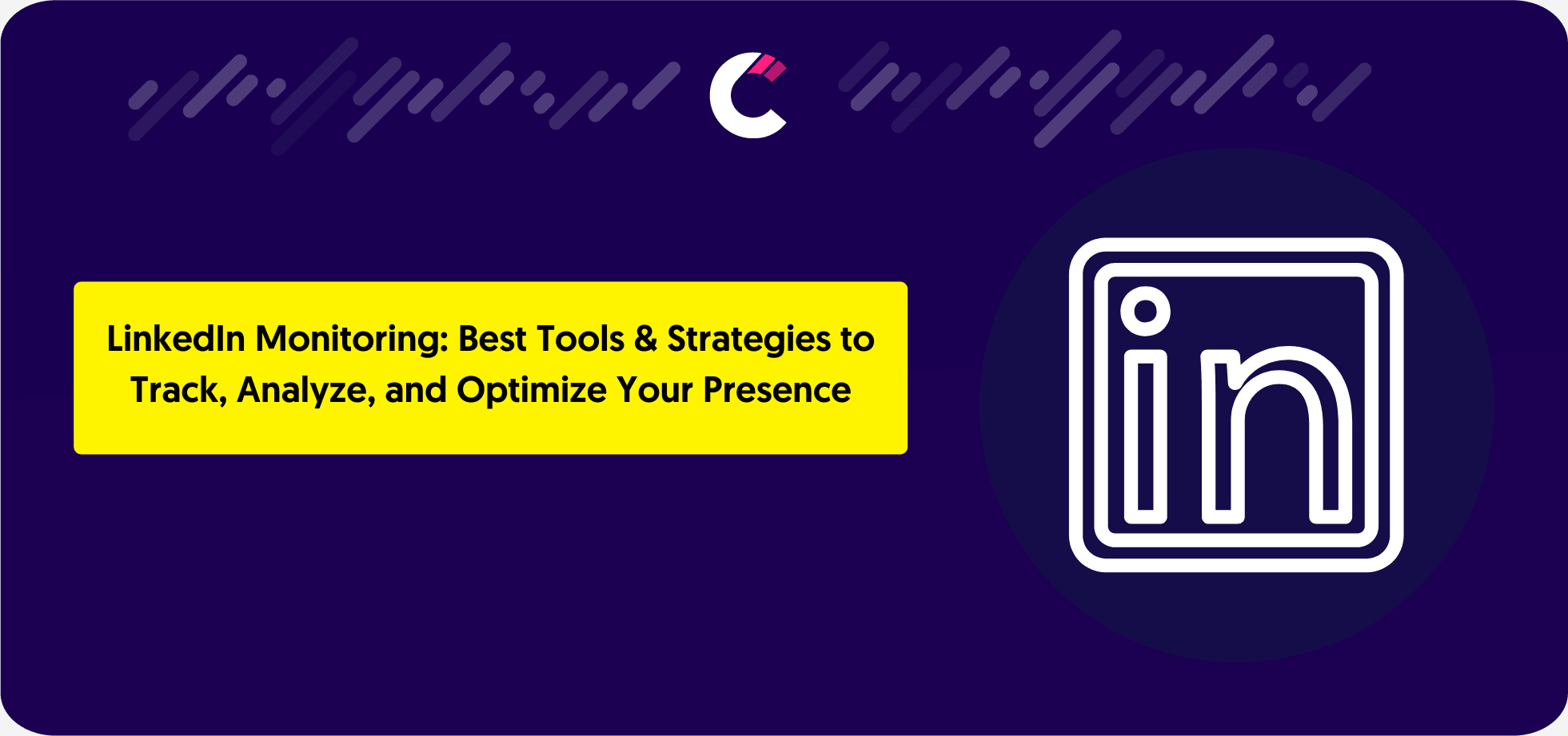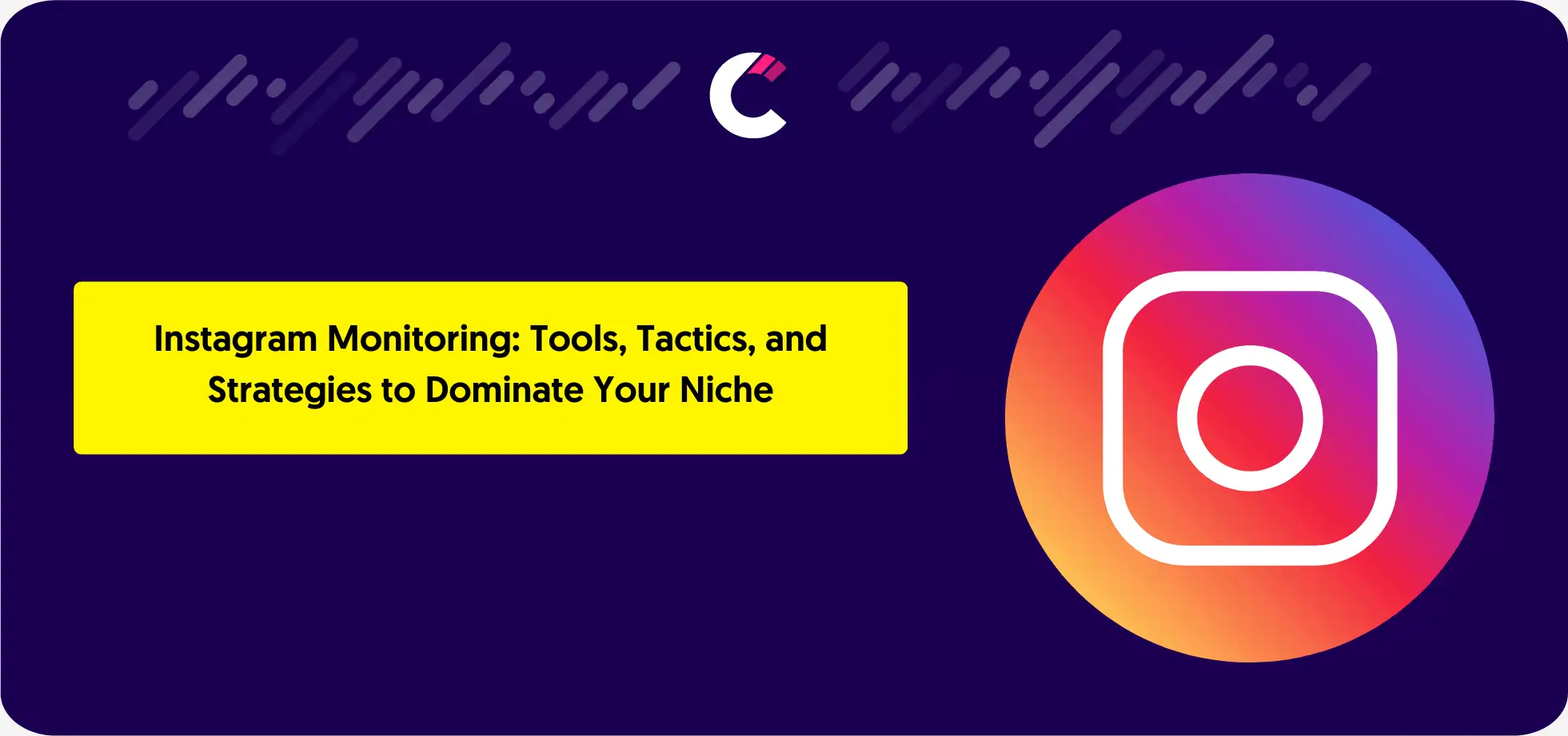What is YouTube Monitoring and Why Does It Matter?
Alright, picture this: You drop a new video, hit publish, and… crickets. Meanwhile, your competitor’s cat video goes viral. HOW? That’s where YouTube monitoring sneaks in – it’s like having a security camera for your channel (minus the creepy vibes).
Here’s the deal: YouTube monitoring tracks EVERYTHING – views, comments, trends, even when Karen from Wisconsin drags your brand in a rant review. (Yes, Karen matters. Sigh.) For creators, it’s your secret weapon to spy on competitors (ethically, cough), spot trends before they’re stale, and fix flops faster than you can say “algorithm change.”
Funny story – Sprout Social’s 2023 research found that 65% of marketers say social listening (aka monitoring) is critical for staying ahead. Why? Because guessing sucks. Monitoring tells you why your ASMR unboxing video tanked, when your audience is binge-watching, and how to clone your competitor’s success (without looking thirsty).
PSA: This isn’t just about vanity metrics. It’s survival. Miss a hate-comment spiral? Boom – reputation nosedive. Ignore trending keywords? Bye, relevancy. But nail monitoring? You’re basically Neo dodging bullets in the Matrix.
(Side note: If you’re not doing this yet, we need to talk. But first – coffee. Always coffee.)
How to Track Your Competition Using Our Free YouTube Channel Monitoring Tool
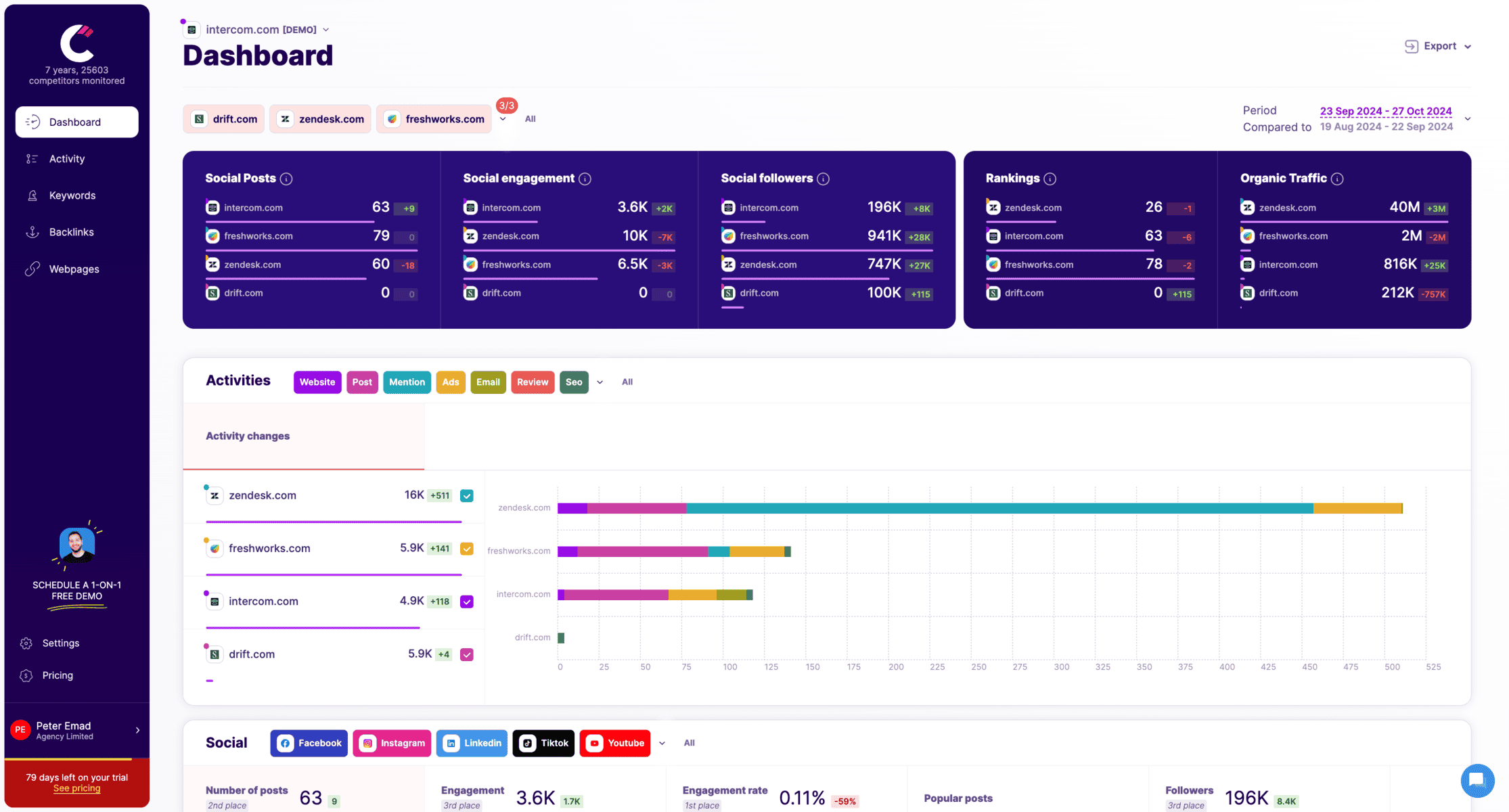
Conducting a social media competitive analysis can be streamlined and efficient with the use of Competitors App that helps you track social media pages easily. . Here’s how to do it:

Step 1: Identify Your Competitors
The first step is to identify who your direct and indirect competitors are. These are the businesses that are vying for the same audience as you.
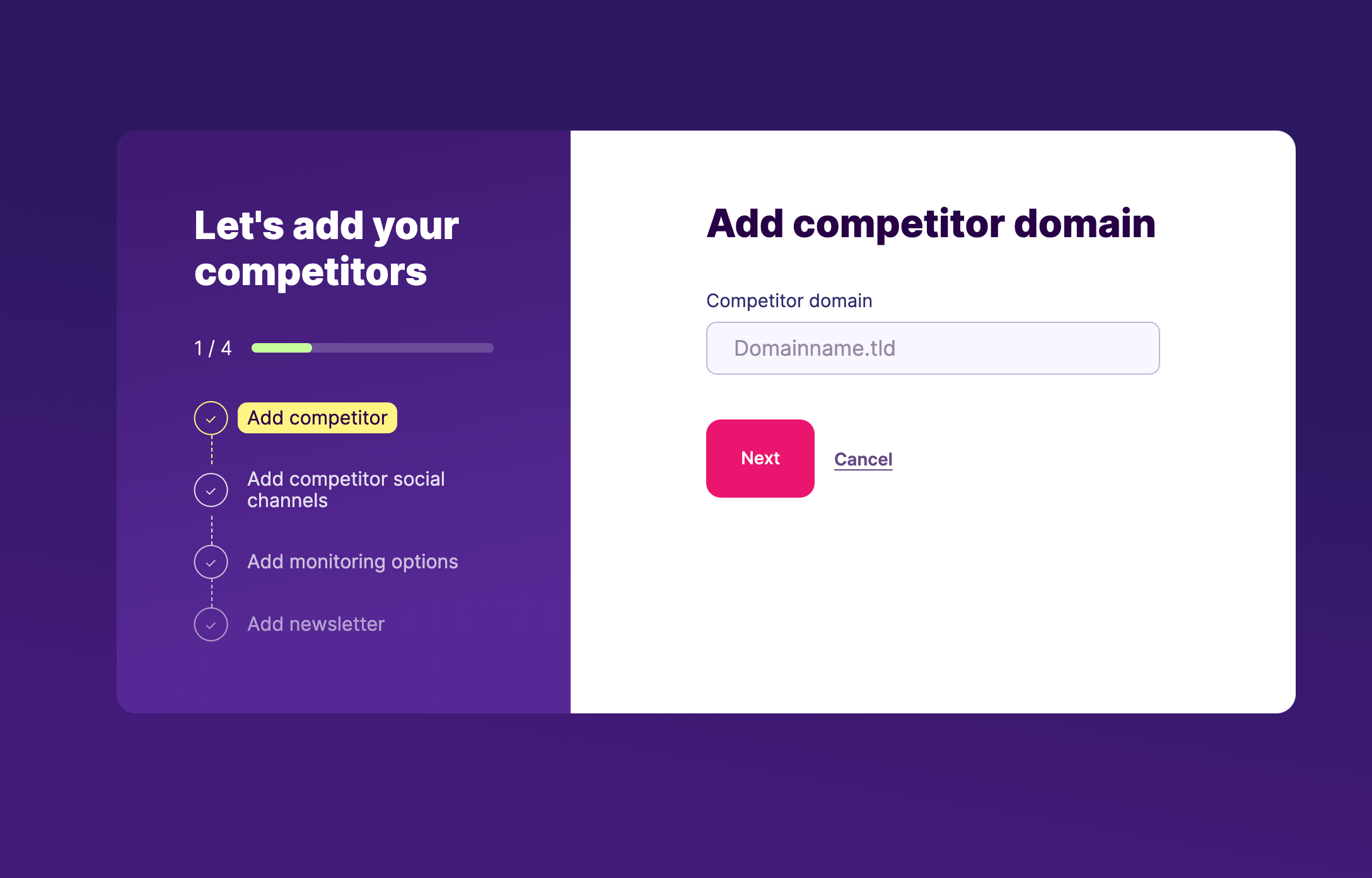
Step 2: Add Your Competitors
Once you have a list of your competitors, add them to Competitors App. This is a straightforward process that allows you to begin tracking their activities.
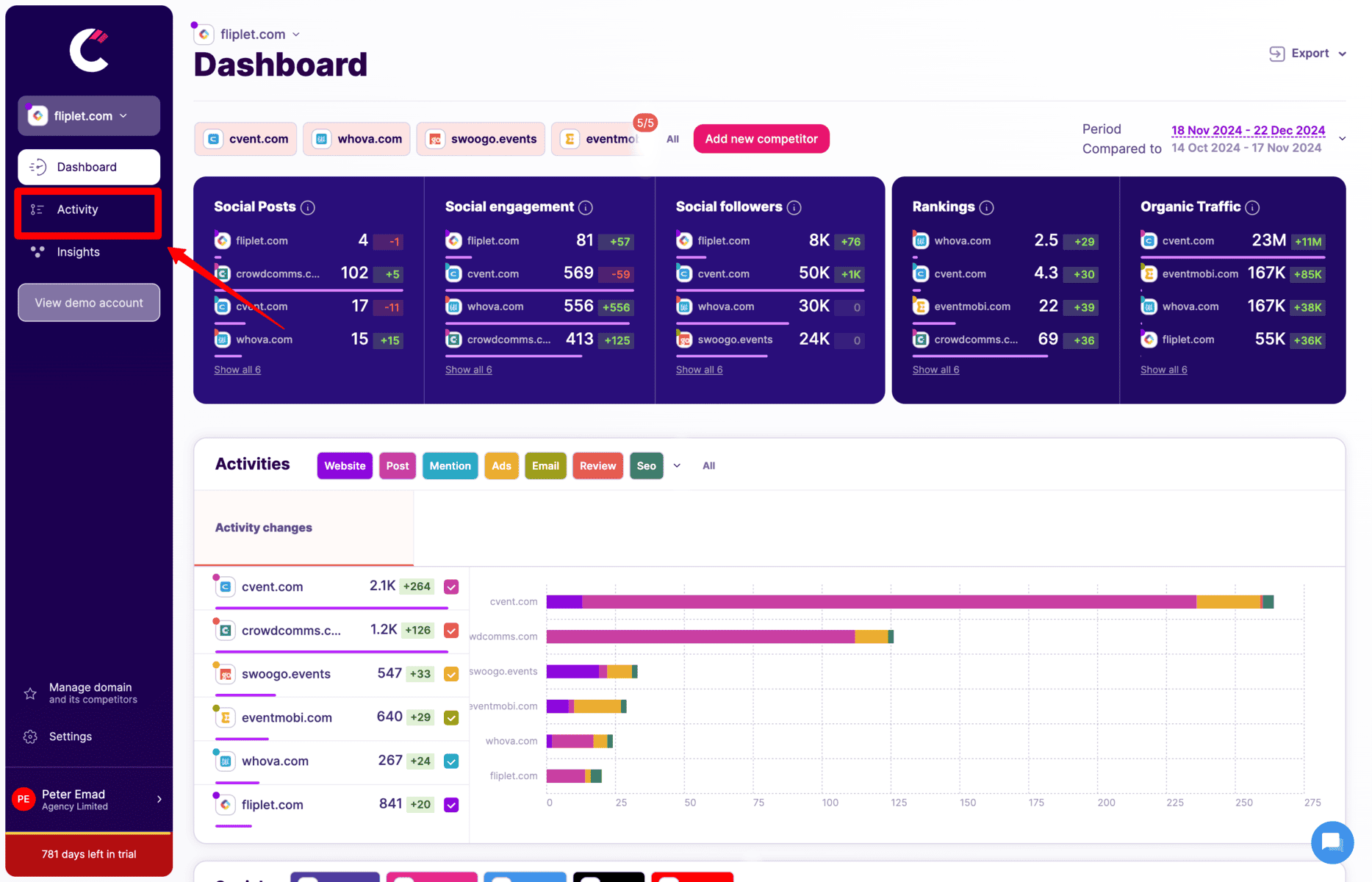
Step 3: Visit the Social Activity Timeline
In the app, navigate to the activity timeline. This feature provides a chronological view of your competitors’ social media posts along with their engagement, follower growth for each post.
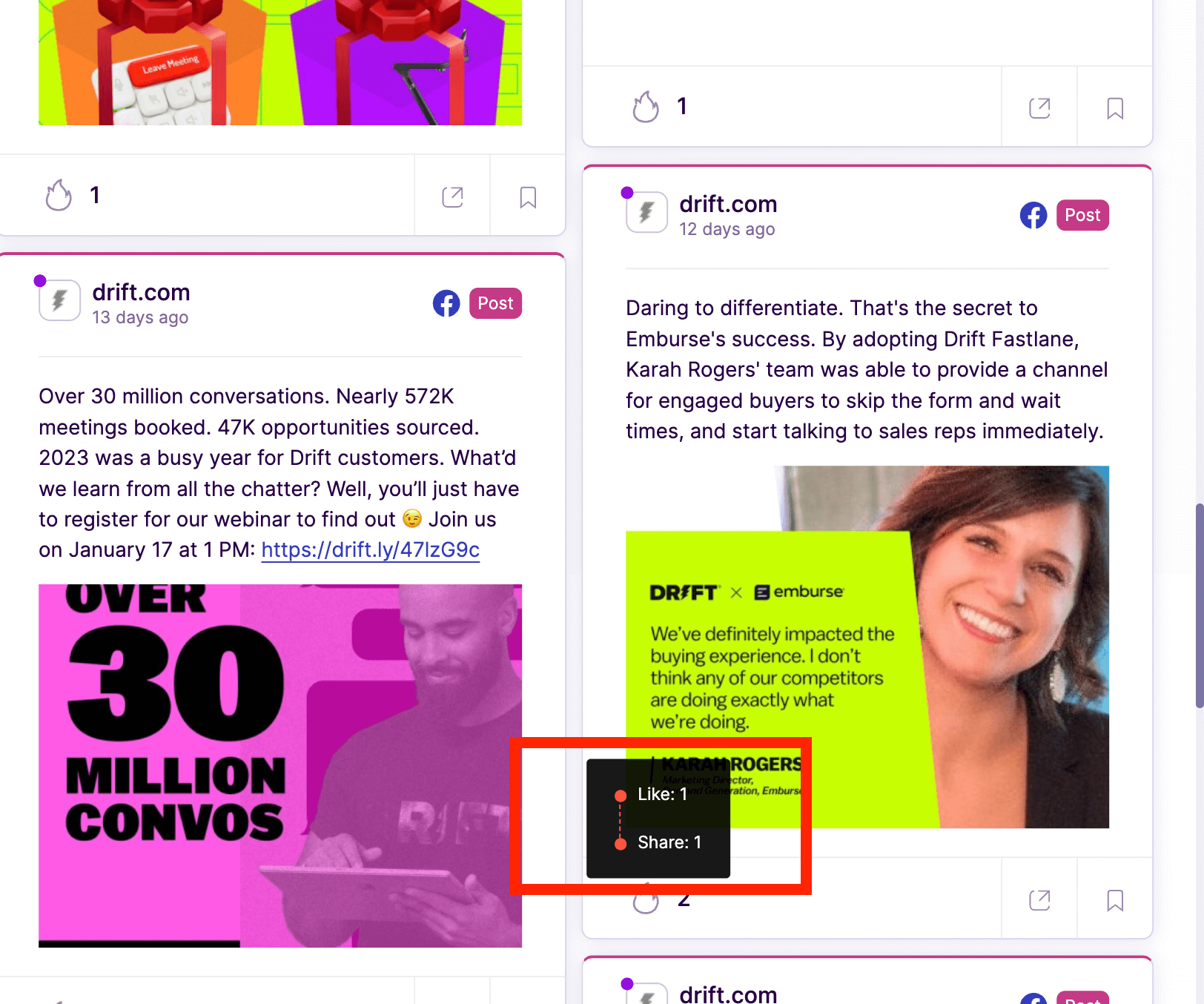
Step 4: Analyze Competitors’ Posts
Examine the content of these posts. Competitors App provides detailed metrics like engagement, likes, shares, and comments, which are crucial for understanding what types of posts are successful or not.
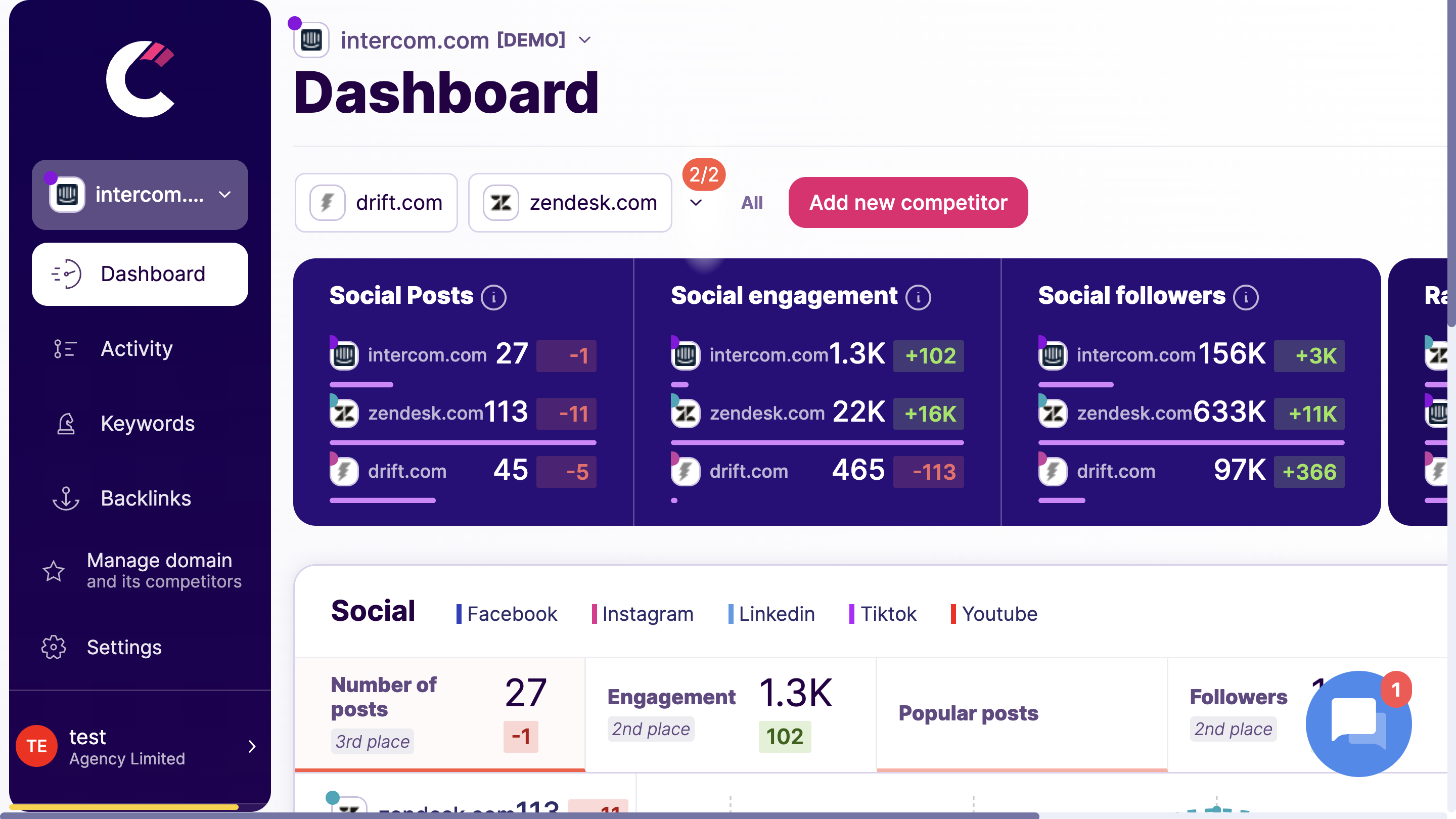
Step 5: Use the Dashboard for Advanced Social Insights
The dashboard in Competitors App offers a comprehensive view of when your competitors are receiving high levels of engagement. You can see which weeks or months they are most active and successful, giving you insights into their posting strategy.
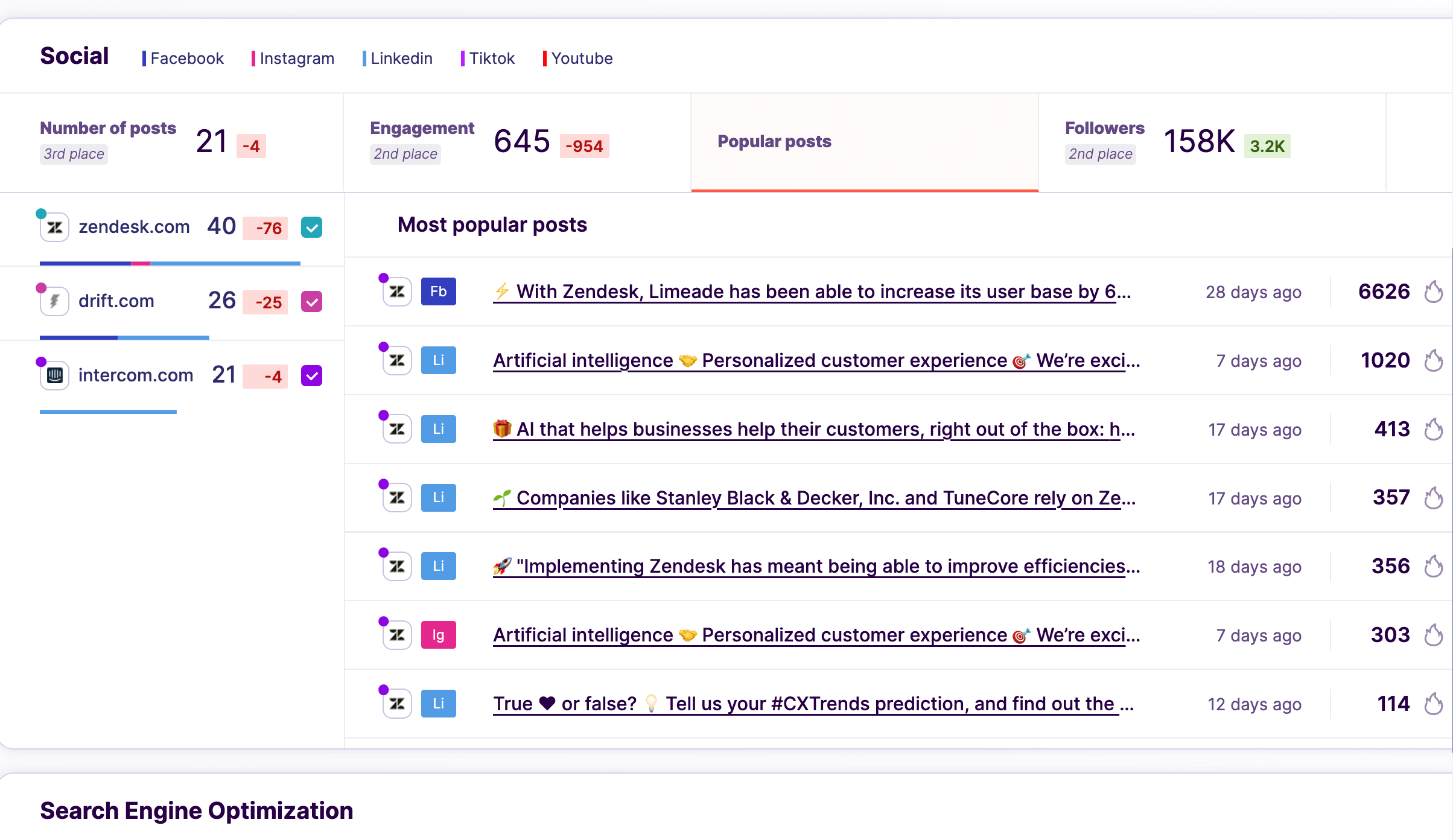
Step 6: Identify their best social media posts per channel
Through this analysis, you'll gain an understanding of which posts resonate with the audience and which don’t. This helps in shaping your content strategy.
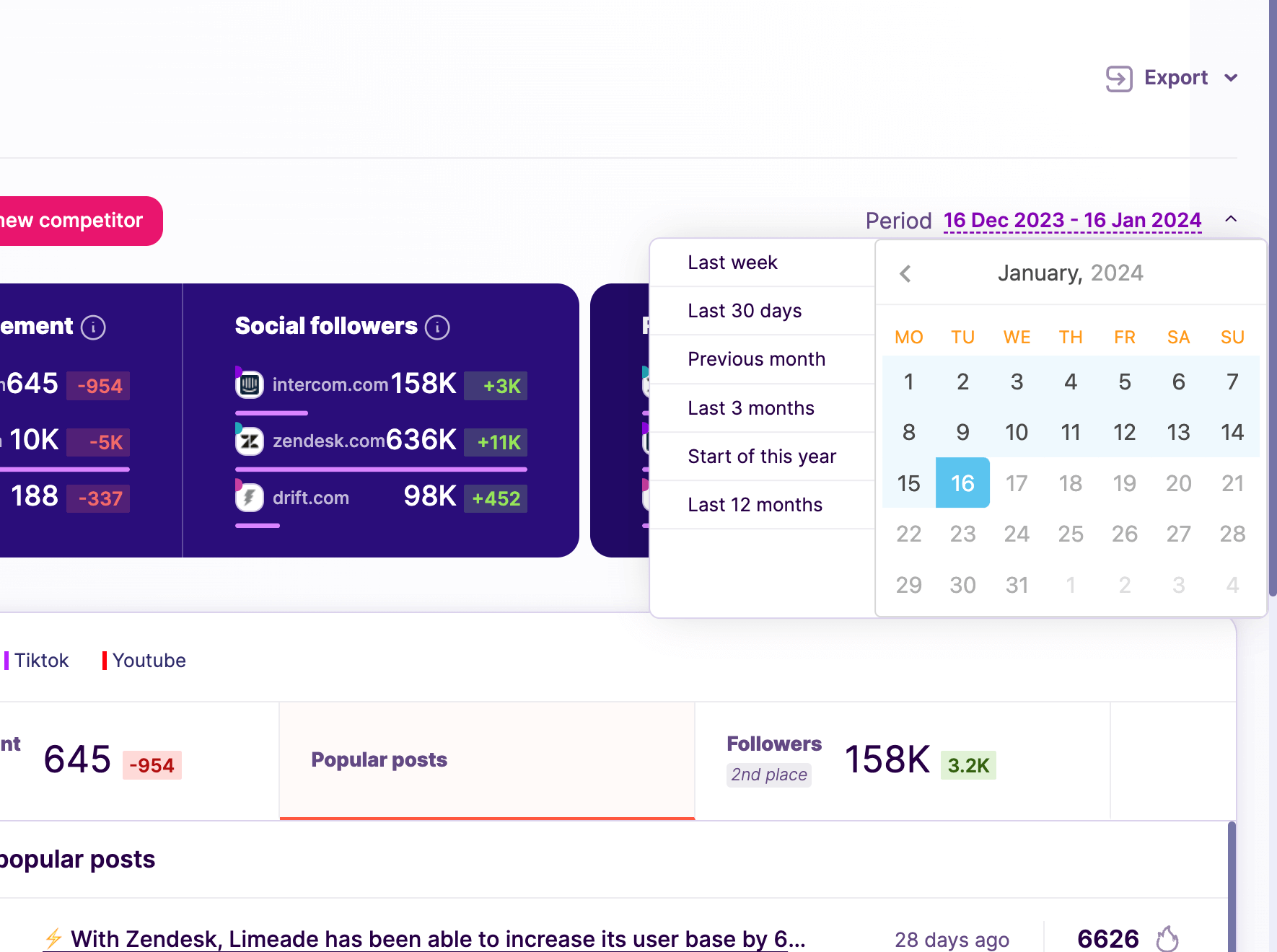
Step 7: Identify the best time and dates for posting
By observing the times when your competitors receive the most engagement, you can better plan when to release your own posts for maximum impact.
By following these steps with Competitors App, you will be to monitor all of your competitors’ social media activities. This process not only provides insights into what works for them but also helps you refine your own approach to achieve better engagement and results.
Best YouTube Monitoring Tools (Free & Paid)
Competitors App

Key Features:
- Monitors competitors’ Facebook activities and updates in real time.
- Provides insights into content performance, follower trends, and engagement metrics.
- Tracks changes in competitor strategies and alerts you to new trends.
Advantages:
- Easy-to-use interface for tracking multiple competitors.
- Detailed reports on engagement and content strategy.
- Alerts for significant updates or changes in competitor activity.
Disadvantages:
- Limited integrations with other analytics platforms.
- Customisation options for reports are somewhat restricted.
Pricing: Starts at $19/month.
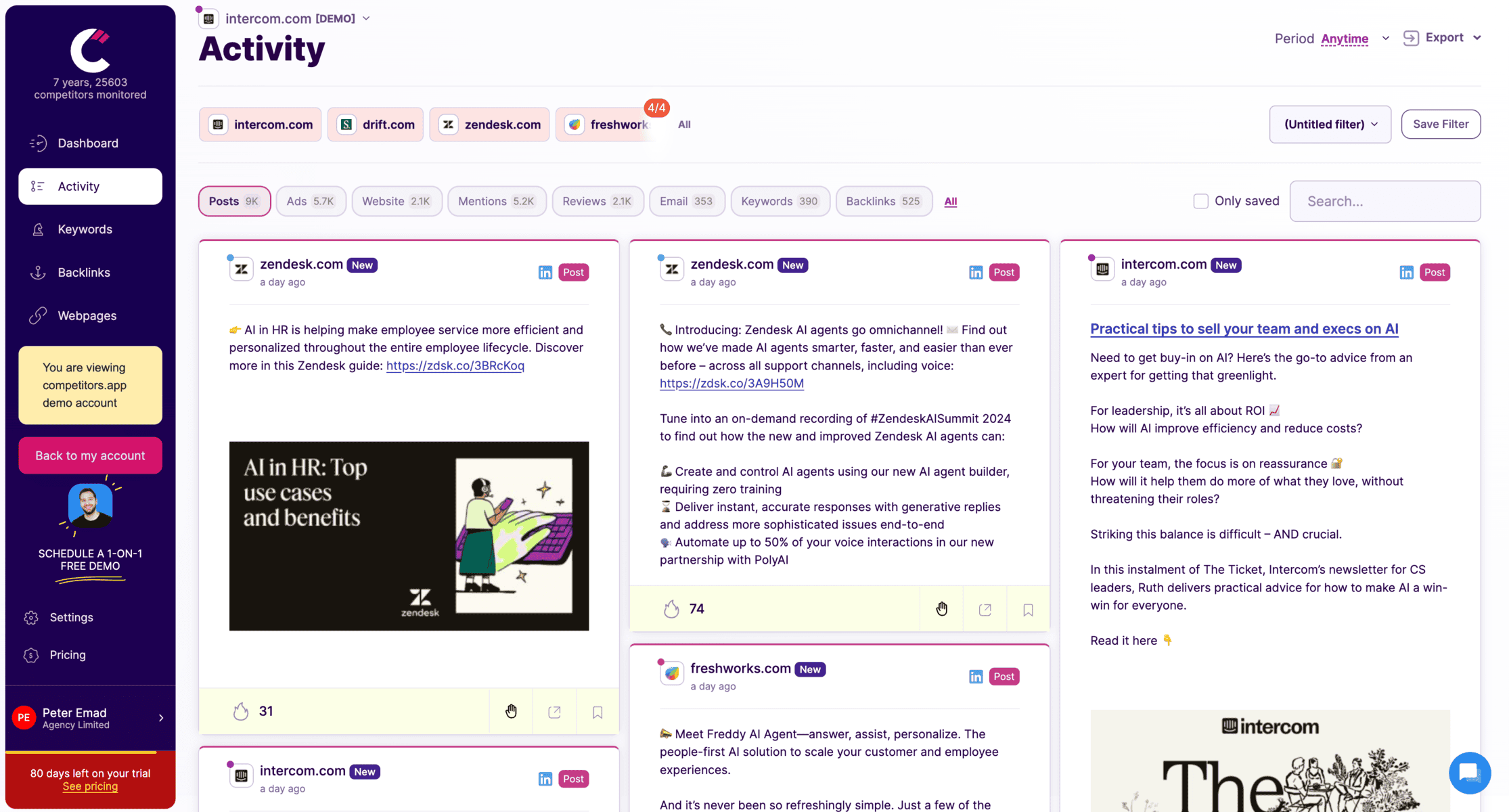
Tracks competitor social media updates across LinkedIn, Facebook, Twitter, and more.
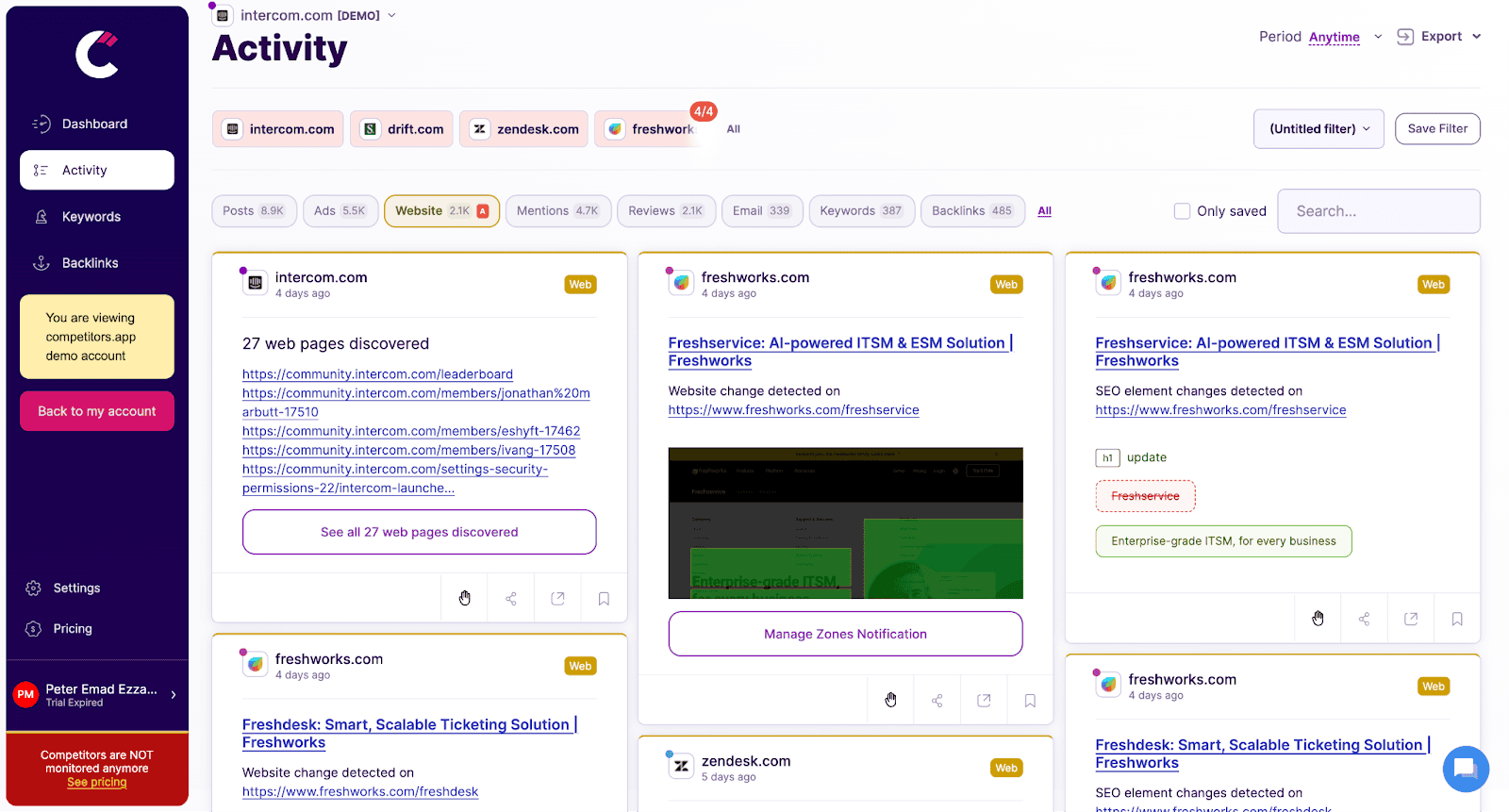
Monitors changes on competitors’ websites, such as product updates, pricing adjustments, and new messaging, providing instant alerts to help sales teams respond promptly.
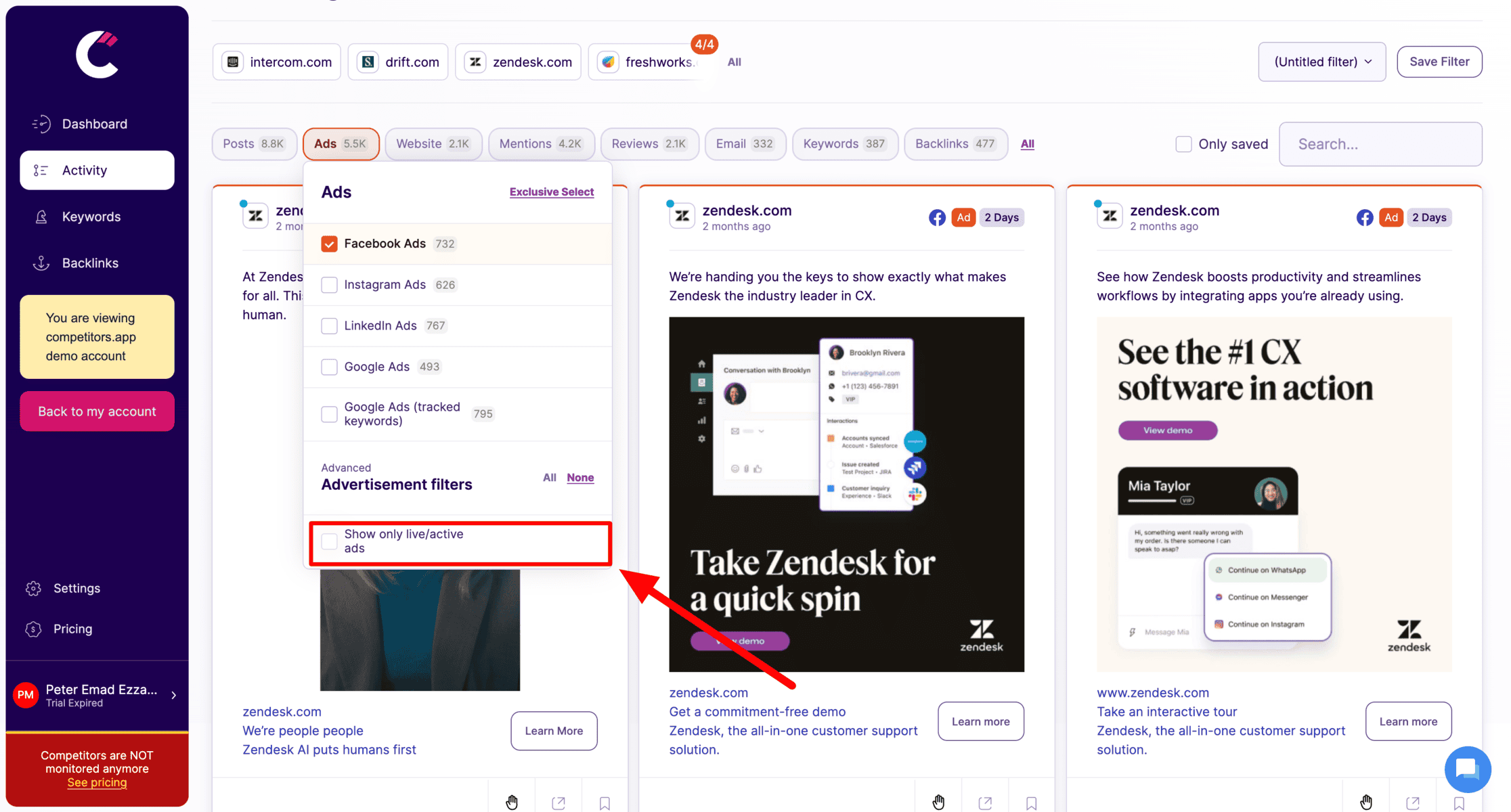
Tracks digital ad campaigns across platforms like Google Ads, Facebook, LinkedIn, and Instagram. It provides details on ad creatives, spending, and performance metrics, helping teams analyze successful ad strategies.

Analyzes competitors’ keyword strategies, organic rankings, and backlinks, allowing teams to refine their own SEO tactics and boost search visibility.

Tracks competitors’ email campaigns, including content, frequency, and engagement metrics, helping sales teams understand email tactics that drive engagement and conversions.
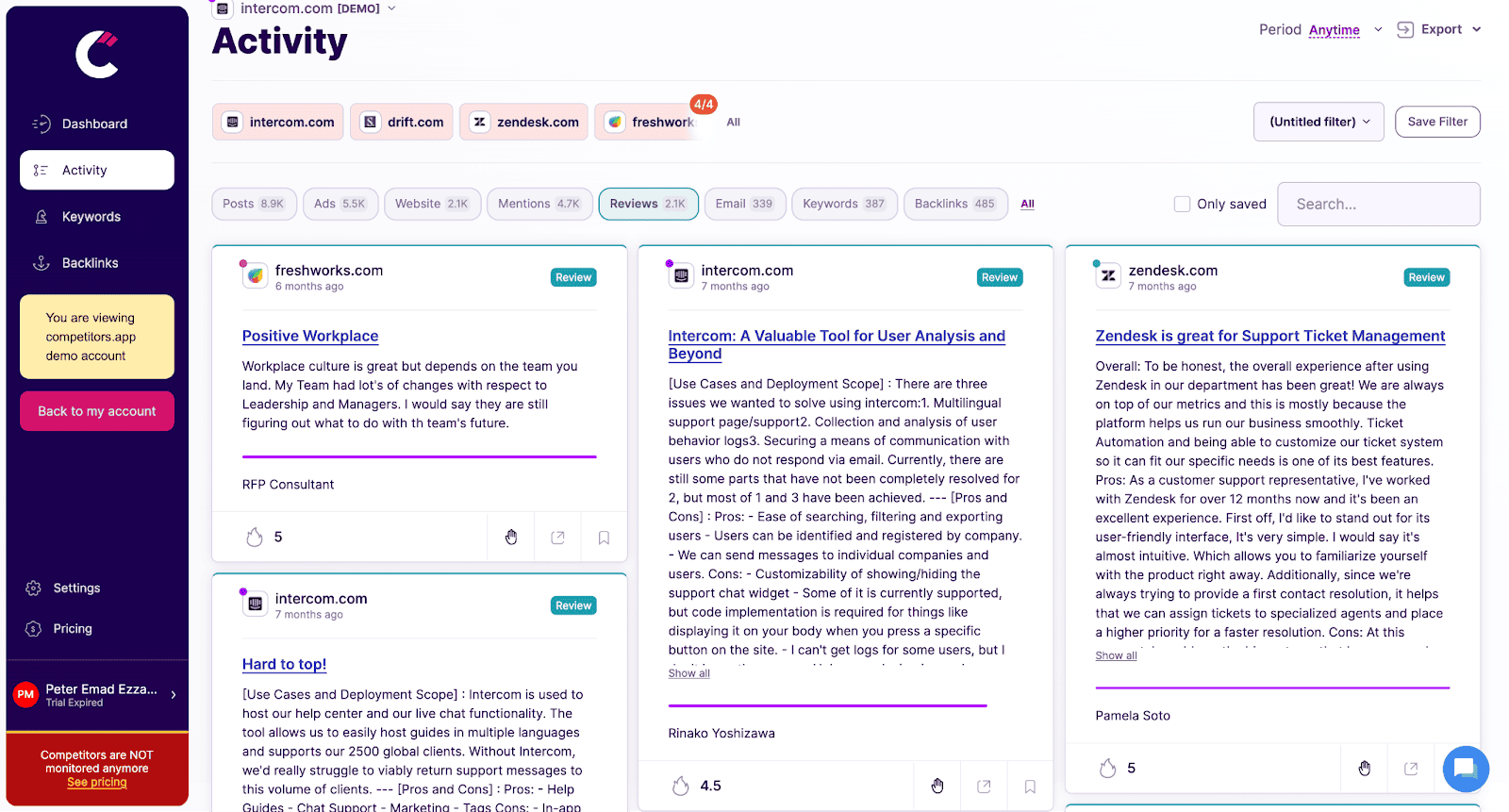
Analyzes customer reviews and ratings for competitors, providing insights into customer feedback, pain points, and product strengths, helping teams craft better sales pitches.
KeyHole
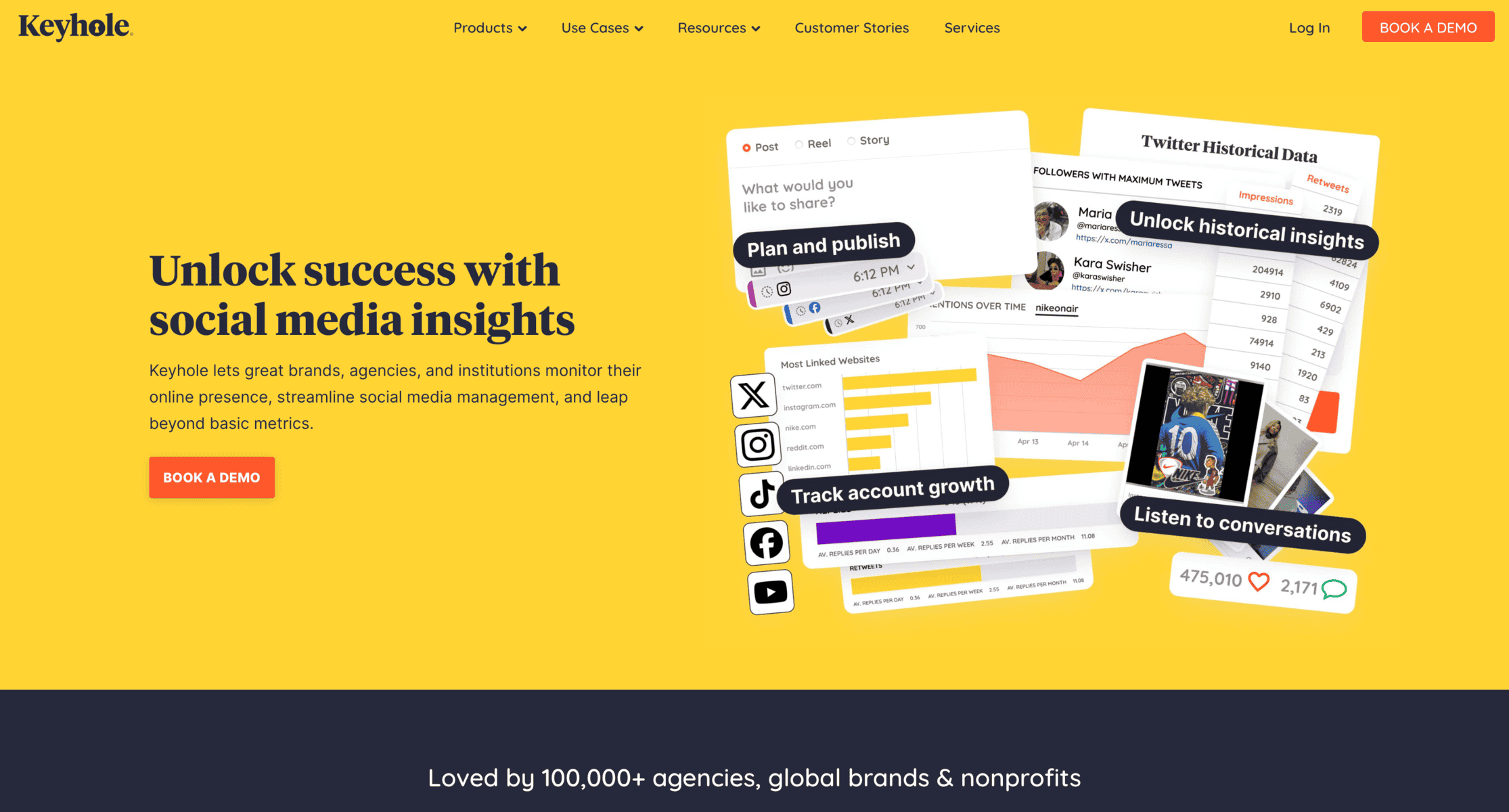
What it does: Unlocks why your audience watches what they watch. Tracks hashtag performance, predicts trends, and analyzes viewer demographics like a data detective.
✅ Advantages:
-
Real-time audience sentiment tracking
-
Hashtag performance reports (no more guessing games)
-
Clean, intuitive dashboard
❌ Disadvantages: -
No fixed pricing (quotes feel like a blind date)
-
Limited YouTube-only features (it’s a multi-platform tool)
💰 Pricing: Custom quotes
TubeRanker
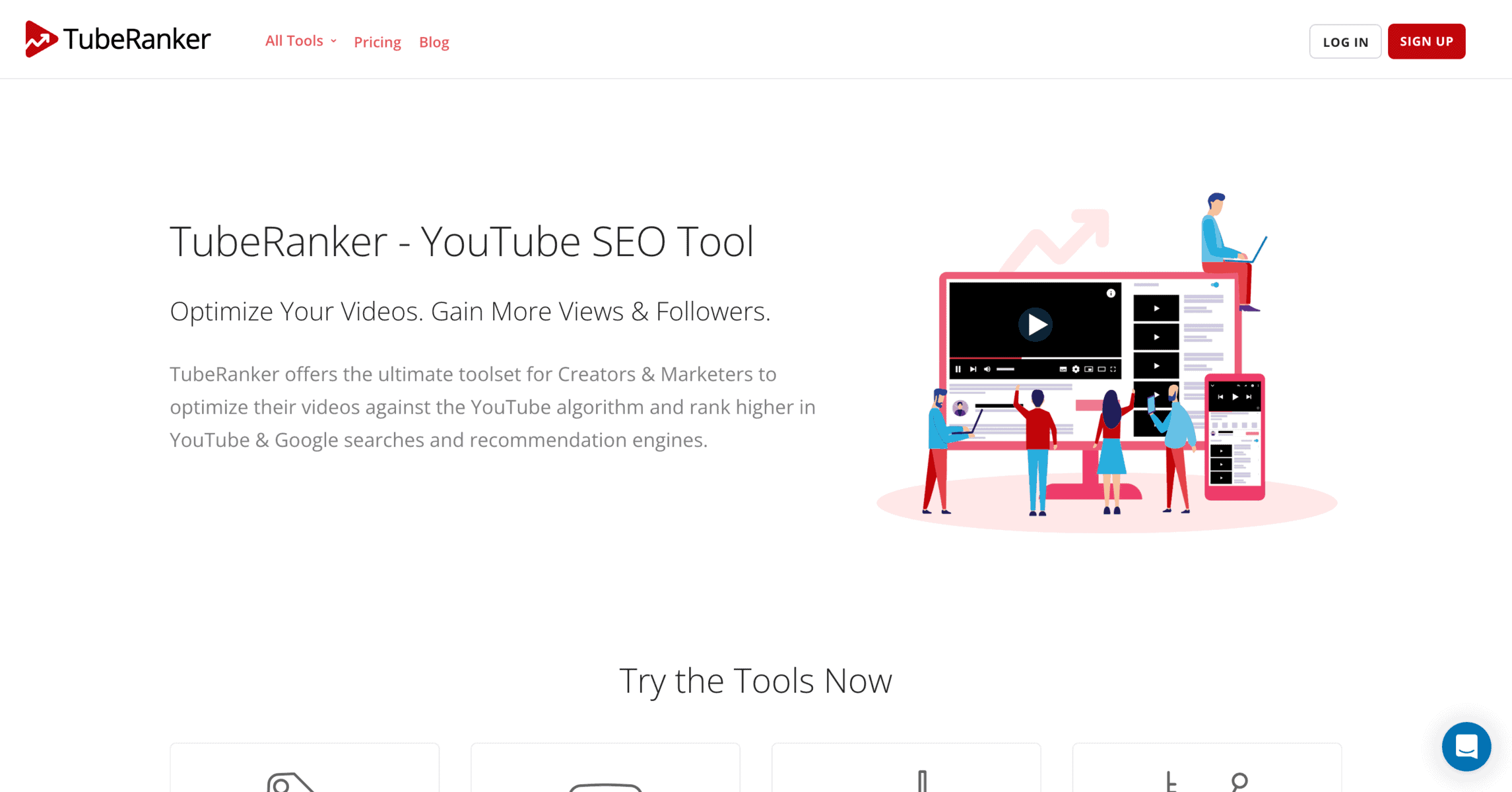
What it does: SEO wizardry for YouTube. Analyzes keywords, ranks your videos against competitors, and roasts your thumbnail choices (politely).
✅ Advantages:
-
Keyword tracking + optimization tips
-
Thumbnail A/B testing tools
-
Affordable for small creators
❌ Disadvantages: -
No social media integration (YouTube-only)
-
Basic analytics compared to pricier tools
💰 Pricing: Starts at $9.9/month
Quintly
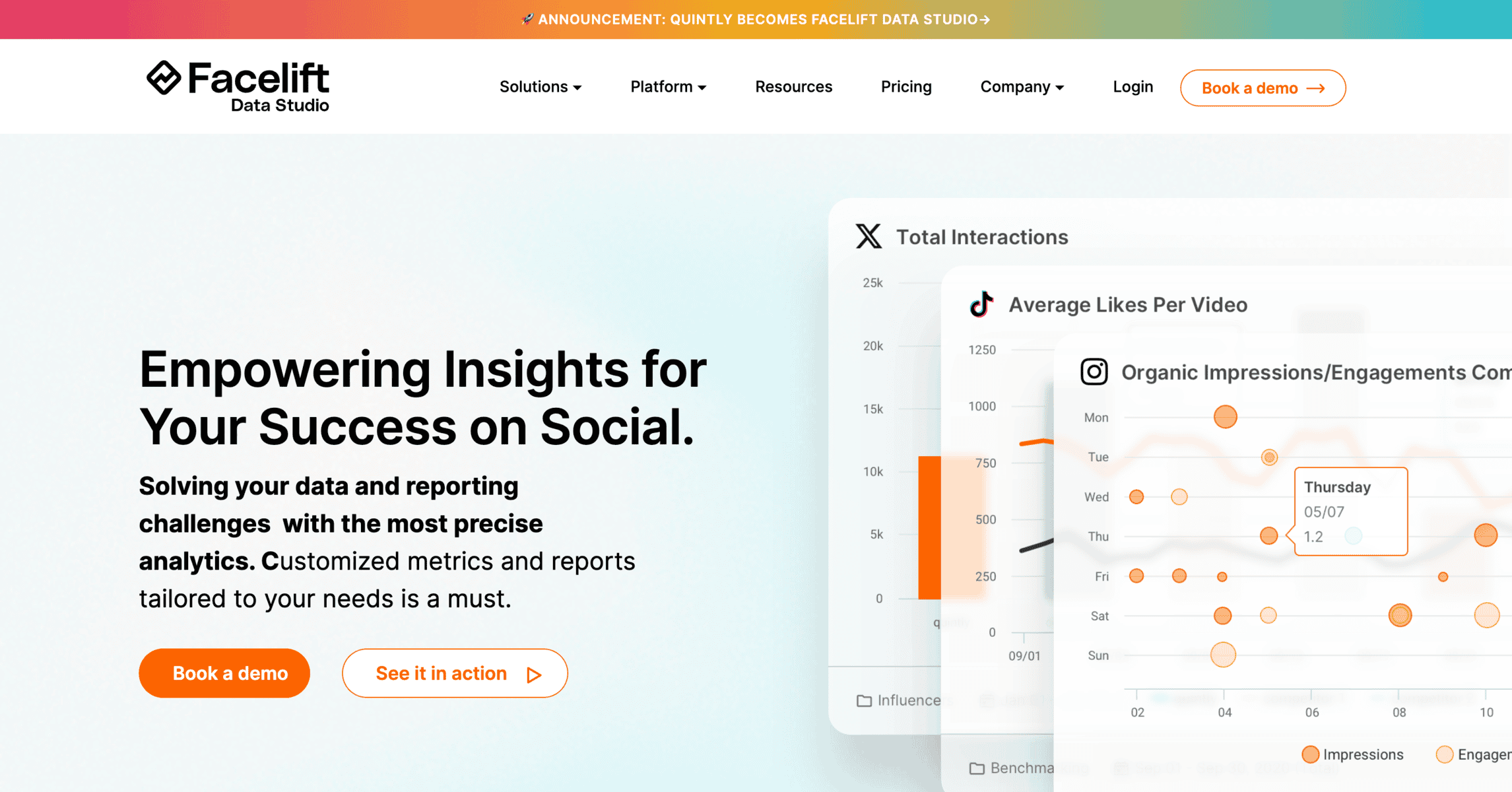
What it does: The Swiss Army knife for data nerds. Tracks YouTube performance alongside Instagram, TikTok, and more. Ideal for teams drowning in spreadsheets.
✅ Advantages:
-
Cross-platform video analytics
-
Customizable reports (impress your boss)
-
Tracks competitor benchmarks
❌ Disadvantages: -
Pricey for solo creators
-
Overkill if you only need YouTube
💰 Pricing: Custom quotes
VidIq

What it does: Your YouTube hype-man. Suggests tags, predicts trends, and yells at you to fix your SEO. Free plan available!
✅ Advantages:
-
Free plan with basic features
-
Real-time SEO suggestions
-
Viral video score predictor
❌ Disadvantages: -
Can feel overwhelming for newbies
-
Advanced features locked behind paywall
💰 Pricing: Free / Paid starts at $19/month
Tubics

What it does:
-
Tool: Their self-service platform offers SEO audits, keyword tracking, and content optimization (the $49/month Starter plan).
-
Agency: They also sell done-for-you services like channel strategy, video production, and ad management ($$$ custom pricing).
✅ Advantages:
-
Solid for DIY creators who want AI-driven SEO help.
-
Agency side is good if you hate hands-on work.
❌ Disadvantages: -
Tool feels limited compared to VidIQ/TubeRanker.
-
Agency pricing isn’t public (red flag for budget-conscious users).
💰 Pricing: -
Tool: Starts at $49/month
-
Agency: “Contact us” vibes
Essential YouTube Monitoring Tips
1. Set Up Alerts for Mentions and Keyword Tracking
Imagine this: Someone makes a video roasting your product… and you find out three weeks later. Yikes. Tools like Google Alerts (free!) and Competitors.app can ping you faster than Karen’s WiFi lets her rant.
✅ Pro move: Track misspellings of your brand name too. (Trust me, “AwsumTechGadgets” vs. “AwesomeTechGadgets” matters.)
🚨 Avoid: Only monitoring your own channel. 43% of brand mentions happen outside tagged videos (Source: HubSpot).
2. Analyze Competitor Video Performance
Be a content detective. Why’s their “10-Minute Yoga for Cats” video crushing it? Use Competitors.app to:
-
Track their upload frequency (are they daily or ghosting viewers?)
-
Steal their best keywords (ethically, of course)
-
Spot their flops (so you don’t repeat “ASMR Car Wash Disaster 2.0”)
💡 Fun fact: Channels that monitor competitors grow 2x faster (Source: Sprout Social).
3. Leverage AI for Smarter YouTube Monitoring
AI isn’t just for chatbots pretending to care. Tools like VidIQ and TubeBuddy can:
-
Predict trending topics (RIP, “quiet quitting”)
-
Auto-suggest tags that don’t suck
-
Flag toxic comments before you spiral
⚠️ Warning: Don’t let AI write your scripts. Yet. (We’ve all seen the robot poetry.)
4. Monitor Audience Engagement and Sentiment
Likes/dislikes are just the tip of the iceberg. Dive into:
-
Comment tone: Are people 😍 or 🔥-ing you?
-
Watch time: If viewers bail at 0:23, your intro’s the problem.
-
Demographics: Why are 60% of your viewers 55+? (Rethink the Fortnite thumbnails.)
🛠️ Tools: Use Keyhole for sentiment tracking or YouTube’s built-in analytics (it’s free, so no excuses).
5. Optimize Video Titles, Tags, and Descriptions for Better Monitoring
Your title is clickbait’s classy cousin. Use TubeRanker or VidIQ to:
-
Stuff keywords naturally (no “TOP 10 SECRETS 2024!!!!!”)
-
A/B test thumbnails (hint: red arrows work, but please stop)
-
Rewrite descriptions hiding in 2012 SEO hell
🔥 Hot take: Update old videos with new keywords. One creator revived a dead video for 500k views (Source: VidIQ Blog).
How to Monitor Your YouTube Channel Effectively
1. Track Video Performance Like a Pro
YouTube Analytics is your new best friend – but only if you actually use it. Here’s how:
-
Watch time: If your audience dips at 0:45, your intro’s a snoozefest.
-
Audience retention: See where people rewatch (hello, meme-worthy moments).
-
Traffic sources: Are viewers coming from TikTok stalking or Google searches?
🔧 Tool tip: Pair YouTube’s native analytics with Competitors.app to benchmark against rivals.
2. Catch Brand Mentions (Even the Sneaky Ones)
Your brand’s being talked about – just not tagged. Tools like Brand24 or Mention can:
-
Find untagged mentions (e.g., “that weird gadget channel” instead of @YourChannel)
-
Track misspellings (looking at you, “YouTub Monitoring”)
-
Alert you to collab opportunities (or roast sessions)
💡 Pro move: Set up a Google Alert for “[Your Brand] + YouTube” – it’s free and lazy-friendly.
3. Spy on Competitors Without Feeling Creepy
Why reinvent the wheel when you can borrow it? Use Competitors.app to:
-
Track their upload schedule (are they daily or ghosting fans?)
-
Reverse-engineer their top-performing keywords
-
Steal their best thumbnail tactics (red arrows optional)
🚨 Warning: Don’t copy-paste. Just… don’t.
4. Master Comment Moderation
Comments can be a goldmine or a dumpster fire. Tools like Hootsuite or TubeBuddy help:
-
Filter spam (“Get rich quick!” → delete)
-
Pin glowing reviews (“This video saved my cat!” → 👑)
-
Respond faster (because “Thanks!” beats radio silence)
🔥 Hot take: Negative comments aren’t all bad – they’re free feedback.
5. Ride Trends Before They Die
Trends fade faster than avocado toast. Use Google Trends or VidIQ to:
-
Spot rising keywords (“AI pancake art”, anyone?)
-
Jump on viral sounds (RIP, “Oh no” song)
-
Partner with micro-influencers (they’re cheaper and hungrier)
📈 Stat: Videos tied to trends get 3x more shares (Source: HubSpot).
Frequently Asked Questions (FAQ)
How do I monitor comments on my YouTube channel?
YouTube Studio’s comment section is… fine. But tools like TubeBuddy or Hootsuite let you:
-
Filter spam (“EARN $10K TODAY!!!” → 🗑️)
-
Respond faster (copy-paste “Thanks!” templates)
-
Track sentiment (are people 😭 or 🎉?)
🔧 Free hack: Sort comments by “Most Liked” – your fans will feel famous.
Is there a way to monitor comments on YouTube automatically?
Yes, but YouTube’s built-in tools are like a 2005 flip phone. Use VidIQ or Brand24 to:
-
Auto-hide toxic comments (goodbye, trolls)
-
Get real-time alerts for keywords (“broken”, “scam”, “overrated”)
-
Assign team members to reply (delegate the drama)
How do I monitor my YouTube channel’s overall health?
Think of it like a yearly physical, but less awkward:
-
Analytics: Watch time dropping? Fix your intros.
-
Mentions: Are people talking about you outside your channel?
-
Competitors: Steal their best practices (not their thumbnails).
☕ Pro tip: Do this monthly. Pair with coffee.
Can I monitor YouTube mentions of my brand for free?
Kinda! Google Alerts is free but clunky. For $0, you can:
-
Search “[Your Brand] + YouTube” manually (tedious)
-
Stalk Reddit threads (risky)
-
Pray someone tags you (unlikely)
💰 Worth paying for? Yes. Try Brand24’s $49/month plan.
What’s the best tool to track competitor YouTube videos?
Competitors.app (shameless plug) or Social Blade. Look for:
-
Upload frequency (are they grinding or ghosting?)
-
Keyword gaps (why their “cat yoga” video went viral)
-
Ad strategies (their unskippable ads vs. yours)
⚠️ Note: This isn’t cheating – it’s “market research”.
Are YouTube analytics accurate?
Mostly, but they’ve got blind spots:
-
Doesn’t track external mentions (blogs, Reddit)
-
Demographics can lag (your 55+ viewers might actually be 13-year-old trolls)
-
Real-time data? Nope. It’s like waiting for dial-up.
How do I track YouTube trends before they peak?
VidIQ’s Trend Alerts or Google Trends. Pro moves:
-
Filter trends by your niche (yes, even “ASMR lawn mowing”)
-
Jump on sounds before they’re oversaturated
-
Steal TikTok trends (they migrate to YouTube 2 weeks later)
Can I monitor my YouTube ads’ performance?
Yep! YouTube Analytics’ “Ad Rates” tab shows:
-
Click-through rates (CTR)
-
Cost per view (CPV)
-
Drop-off points (where people hit “skip”)
🔥 Hot take: If your CPV is higher than a Starbucks latte, rethink your targeting.
